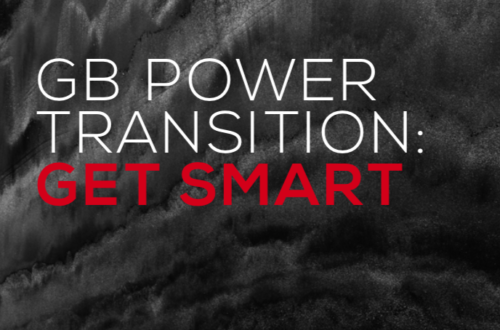GB Power Transition: Get Smart
The UK’s electricity system is changing — by 2030 more than half of power is expected to come from wind and solar.
Last updated:
A report commissioned by the Energy and Climate Intelligence Unit (ECIU) from New Resource Partners finds that an electricity system featuring 50% of generation from wind and solar can keep Britain’s lights on even during an extreme three-week ‘wind lull’ in the middle of winter. And the cost of such a system would be no higher than expanding use of gas-fired power stations.
The report highlights the importance of the four ‘flexibility mechanisms’ – demand shifting, storage, international trade and flexible power plants – as features of the smart grid.
Overview
The analysis used New Resource Partner’s REDM model, drawing on real-world data on wind and solar generation. An extreme three-week ‘wind lull’ (i.e. with little or no wind generation) in the middle of winter was modelled, when electricity demand is at its highest.
It finds that energy security is maintained, with less gas generation capacity needed as back-up than the UK currently possesses. Gas-fired power stations and interconnectors support baseload generation, as demand-shifting and energy storage smooth out peaks in demand.
On cost, the model compares a future UK energy system in which gas capacity increases to cover UK demand once the existing pipeline of renewable projects is complete, against one in which renewable generation reaches 50 per cent. It found that the cost of both systems is broadly comparable, with the high-renewables system proving more expensive initially but becoming cheaper by 2030.
The report was commissioned by the Energy and Climate Intelligence Unit (ECIU) in order to understand the capacity of a smart energy grid to support Britain’s low-carbon transition, and an energy system increasingly dominated by variable wind and solar power.
It found that the four flexibility mechanisms inherent in a smart grid – demand shifting (or demand-side response, DSR), energy storage, trade with Europe via interconnectors and flexible gas-fired power plants – deliver robust energy security even in challenging conditions.
New Resource Partners argues that Government and regulators should support flexible and renewable power technologies, including through the development of more appropriate markets. NRP’s recommendations include building a flexibility market and opening up access; supporting deeper and more liquid energy trading on a last-minute basis, as well as smart local power markets; and more energy trading with European partners.
To download the report, click here.
